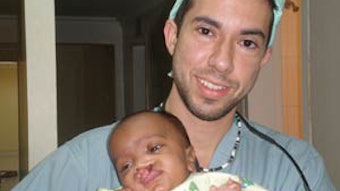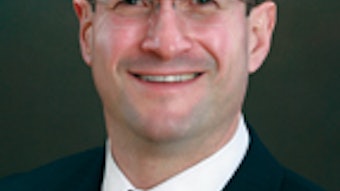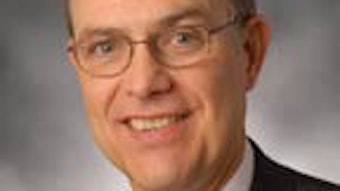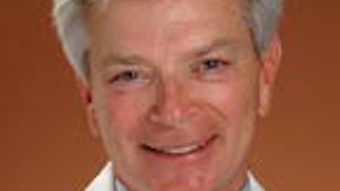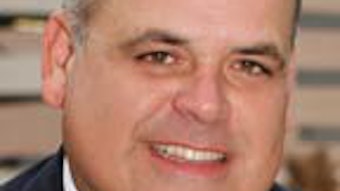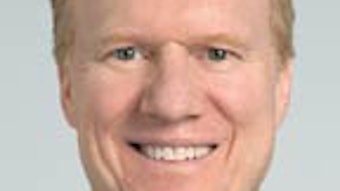Template Appeal Letter for SCAN Denials
In response to the increased denials that members have been receiving from private payers for the new procedure code for Stereotactic Computer-Assisted Navigation (SCAN) (+ 61782 – cranial, extradural [(List separately in addition to code for primary procedure]), the Physician Payment Policy workgroup (3P) has drafted an appeal template letter, which members may use to appeal these denials. Although the +61782 is a new code, it replaces a procedure code (+61795 – Stereotactic computer-assisted volumetric [navigational] procedure, intracranial, extracranial, or spinal[ List separately in addition to code for primary procedure]) that private payers previously reimbursed. This appeal template letter is also available at http://www.entnet.org/Practice/Appeal-Template-letters.cfm This letter is generic and acts only as guidance for you to construct your appeal letter. You should use your company letterhead/logo and fill in the blanks and header information. We recommend that you also submit any other relevant supporting documents, for example, medical notes, operative reports, policy statement, and coding guidance for SCAN, etc. If you receive a denial for image guidance, please also report this denial and the denial reason to healthpolicy@entnet.org or 1-703-535-3727 [Insurer Name] [Insurer Address] Re: Patient: [Name] Policy Number: Group Number: Claim Number: Date of Service: Dear [Medical Director]: Please consider this letter a formal request for reconsideration of a denial received for a stereotactic computer-assisted navigation (SCAN) procedure (image guidance) performed on [Patient’s Name] on [Date of Service] by [Name of Physician]. The claim for the SCAN procedure was billed with CPT ©code +61782 – cranial, extradural (List separately in addition to code for primary procedure). Although CPT code +61782 is a new CPT code and became effective on January 1, 2011, it describes an existing procedure that [Insurer Name] previously covered and reimbursed. The former code for the SCAN procedure was CPT © code +61795 – Stereotactic computer assisted volumetric (navigational) procedure, intracranial, extracranial, or spinal (List separately in addition to code for primary procedure); it was deleted because the CPT Editorial Panel split it into three separate add-on codes (+61781 Stereotactic computer-assisted (navigational) procedure; cranial, intradural – , +61782 – Stereotactic computer-assisted (navigational) procedure; cranial, extradural and +61783 – Stereotactic computer-assisted (navigational) procedure; spinal) to differentiate distinct anatomic regions. Of course, one can no longer report a service with a deleted code, but CPT code +61782 is the same procedure that was previously covered by +61795. Therefore, your denial of +61782 as experimental and/or investigational or otherwise considered non-reimbursable is totally illogical. The full allowable amount should be paid for CPT code +61782 because it is an add-on procedure code, and its Medicare fee work relative value already accounts for the procedure never being performed alone. As you may be aware, SCAN provides the surgeon with 3D real-time positioning within the nasal cavity and paranasal sinuses, allowing him/her to appropriately remove diseased tissue and avoid damage to the orbital, other extra-cranial, and/or intra-cranial areas. This is particularly useful in patients who have experienced a loss of surgical landmarks and barriers due to previous surgery, sinonasal polyposis, neoplasms, or severe infections/inflammatory processes. The purpose of using stereotactic computer-assisted navigation in sinus surgery is to maximize accuracy and safety of the surgical procedure. I am enclosing the previously submitted claim, the Explanation of Benefits, operative notes, and the American Academy of Otolaryngology – Head and Neck Surgery’s policy statement, Intra-Operative Use of Computer Aided Surgery and Coding for Stereotactic Computer Assisted Navigation. Please reprocess this claim for the payment of CPT code +61782. If you require additional information, please contact me at [Phone number]. Thank you for your prompt action. Sincerely, [Physician Name, MD] Enclosures: [insert number of enclosures] cc: [Patient’s Name] Link to Intra-Operative Use of Computer Aided Surgery Policy statement: http://www.entnet.org/Practice/policyIntraOperativeSurgery.cfm Link to Coding for Stereotactic Computer Assisted Navigation: http://www.entnet.org/Practice/Coding-for-Stereotactic-Computer-Assisted-Navigatione.cfm
In response to the increased denials that members have been receiving from private payers for the new procedure code for Stereotactic Computer-Assisted Navigation (SCAN) (+ 61782 – cranial, extradural [(List separately in addition to code for primary procedure]), the Physician Payment Policy workgroup (3P) has drafted an appeal template letter, which members may use to appeal these denials.
Although the +61782 is a new code, it replaces a procedure code (+61795 – Stereotactic computer-assisted volumetric [navigational] procedure, intracranial, extracranial, or spinal[ List separately in addition to code for primary procedure]) that private payers previously reimbursed. This appeal template letter is also available at http://www.entnet.org/Practice/Appeal-Template-letters.cfm
This letter is generic and acts only as guidance for you to construct your appeal letter. You should use your company letterhead/logo and fill in the blanks and header information. We recommend that you also submit any other relevant supporting documents, for example, medical notes, operative reports, policy statement, and coding guidance for SCAN, etc.
If you receive a denial for image guidance, please also report this denial and the denial reason to healthpolicy@entnet.org or 1-703-535-3727
[Insurer Name]
[Insurer Address]
Re: Patient: [Name]
Policy Number:
Group Number:
Claim Number:
Date of Service:
Dear [Medical Director]:
Please consider this letter a formal request for reconsideration of a denial received for a stereotactic computer-assisted navigation (SCAN) procedure (image guidance) performed on [Patient’s Name] on [Date of Service] by [Name of Physician].
The claim for the SCAN procedure was billed with CPT ©code +61782 – cranial, extradural (List separately in addition to code for primary procedure).
Although CPT code +61782 is a new CPT code and became effective on January 1, 2011, it describes an existing procedure that [Insurer Name] previously covered and reimbursed. The former code for the SCAN procedure was CPT © code +61795 – Stereotactic computer assisted volumetric (navigational) procedure, intracranial, extracranial, or spinal (List separately in addition to code for primary procedure); it was deleted because the CPT Editorial Panel split it into three separate add-on codes (+61781 Stereotactic computer-assisted (navigational) procedure; cranial, intradural – , +61782 – Stereotactic computer-assisted (navigational) procedure; cranial, extradural and +61783 – Stereotactic computer-assisted (navigational) procedure; spinal) to differentiate distinct anatomic regions. Of course, one can no longer report a service with a deleted code, but CPT code +61782 is the same procedure that was previously covered by +61795. Therefore, your denial of +61782 as experimental and/or investigational or otherwise considered non-reimbursable is totally illogical. The full allowable amount should be paid for CPT code +61782 because it is an add-on procedure code, and its Medicare fee work relative value already accounts for the procedure never being performed alone.
As you may be aware, SCAN provides the surgeon with 3D real-time positioning within the nasal cavity and paranasal sinuses, allowing him/her to appropriately remove diseased tissue and avoid damage to the orbital, other extra-cranial, and/or intra-cranial areas. This is particularly useful in patients who have experienced a loss of surgical landmarks and barriers due to previous surgery, sinonasal polyposis, neoplasms, or severe infections/inflammatory processes. The purpose of using stereotactic computer-assisted navigation in sinus surgery is to maximize accuracy and safety of the surgical procedure.
I am enclosing the previously submitted claim, the Explanation of Benefits, operative notes, and the American Academy of Otolaryngology – Head and Neck Surgery’s policy statement, Intra-Operative Use of Computer Aided Surgery and Coding for Stereotactic Computer Assisted Navigation.
Please reprocess this claim for the payment of CPT code +61782. If you require additional information, please contact me at [Phone number].
Thank you for your prompt action.
Sincerely,
[Physician Name, MD]
Enclosures: [insert number of enclosures]
cc: [Patient’s Name]
Link to Intra-Operative Use of Computer Aided Surgery Policy
statement: http://www.entnet.org/Practice/policyIntraOperativeSurgery.cfm
Link to Coding for Stereotactic Computer Assisted Navigation: http://www.entnet.org/Practice/Coding-for-Stereotactic-Computer-Assisted-Navigatione.cfm

